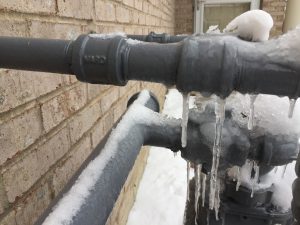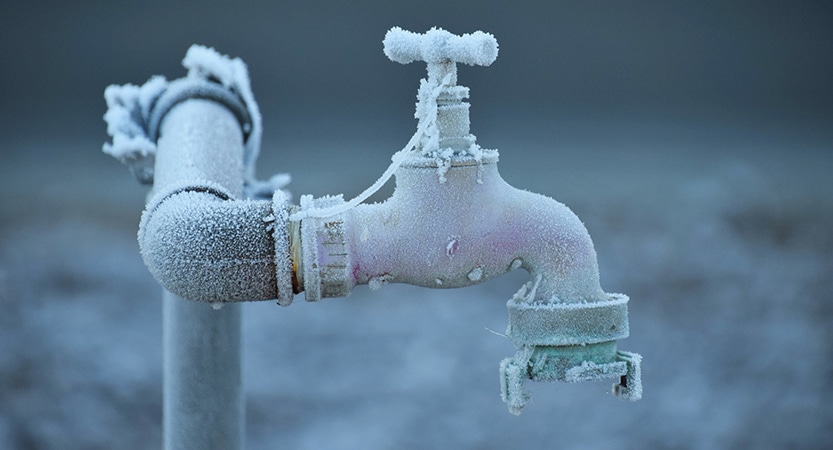Protecting Your Pipes from Freezing Damage: Critical Tips
Protecting Your Pipes from Freezing Damage: Critical Tips
Blog Article
We have encountered the article involving Preventing and dealing with frozen pipes listed below on the web and reckoned it made sense to talk about it with you in this article.

Winter can wreak havoc on your plumbing, specifically by freezing pipes. Right here's just how to avoid it from happening and what to do if it does.
Intro
As temperatures decrease, the risk of frozen pipelines rises, potentially resulting in pricey repairs and water damages. Comprehending just how to avoid icy pipes is essential for home owners in chilly environments.
Understanding Frozen Pipes
What triggers pipes to ice up?
Pipes freeze when exposed to temperature levels below 32 ° F (0 ° C) for prolonged durations. As water inside the pipes ices up, it increases, taxing the pipe wall surfaces and potentially causing them to burst.
Dangers and damages
Icy pipes can bring about water system interruptions, residential or commercial property damage, and costly repair work. Burst pipes can flooding homes and trigger extensive architectural damage.
Indicators of Frozen Water Lines
Recognizing icy pipelines early can stop them from breaking.
Exactly how to identify icy pipes
Look for lowered water circulation from faucets, uncommon smells or sounds from pipelines, and noticeable frost on revealed pipes.
Avoidance Tips
Shielding vulnerable pipelines
Cover pipes in insulation sleeves or make use of heat tape to shield them from freezing temperature levels. Concentrate on pipelines in unheated or external locations of the home.
Home heating methods
Maintain indoor areas appropriately heated, especially locations with pipes. Open closet doors to allow warm air to distribute around pipes under sinks.
Securing Exterior Plumbing
Garden hose pipes and outdoor taps
Detach and drain pipes yard hoses prior to wintertime. Install frost-proof spigots or cover exterior faucets with protected caps.
What to Do If Your Pipelines Freeze
Immediate activities to take
If you believe frozen pipes, maintain faucets available to relieve pressure as the ice melts. Use a hairdryer or towels soaked in hot water to thaw pipes slowly.
Long-Term Solutions
Structural modifications
Consider rerouting pipelines far from exterior walls or unheated areas. Include extra insulation to attics, cellars, and crawl spaces.
Updating insulation
Buy high-grade insulation for pipes, attic rooms, and walls. Correct insulation aids preserve constant temperature levels and minimizes the danger of icy pipelines.
Verdict
Preventing frozen pipelines needs proactive steps and quick feedbacks. By recognizing the reasons, signs, and safety nets, homeowners can shield their plumbing during cold weather.
6 Proven Ways to Prevent Frozen Pipes and Protect Your Home
Disconnect and Drain Garden Hoses
Before winter arrives, start by disconnecting your garden hoses and draining any remaining water. Close the shut-off valves that supply outdoor hose bibs and leave the outdoor faucet open to allow any residual water to drain. For extra protection, consider using faucet covers throughout the colder months. It’s also important to drain water from any sprinkler supply lines following the manufacturer’s directions.
Insulate Exposed Pipes
Insulating your pipes is an effective way to prevent freezing. Pipe insulation is readily available at home improvement stores and is relatively inexpensive. Pay close attention to pipes in unheated areas such as the attic, basement, crawl spaces, or garage. Apply foam insulation generously to create a buffer against the cold. You can also wrap your pipes in heat tape or thermostat-controlled heat cables for added warmth.
Seal Air Leaks
Inspect your home for any cracks or openings that could let in cold air. Seal any holes around the piping in interior or exterior walls, as well as the sill plates where your home rests on its foundation. Additionally, make sure to keep your garage door closed unless you’re entering or exiting. Leaving it open creates a significant air leak that can lead to frozen pipes.
Allow Warm Air Circulation
During cold snaps, it’s essential to allow warm air to circulate evenly throughout your home. Leave interior doors ajar to promote better airflow. Open kitchen and bathroom cabinets to help distribute heat consistently around the rooms. If you have small children or pets, be sure to remove any household chemicals or potentially harmful cleaners from open cabinets for safety.
Let Faucets Drip
A small trickle of water can make a big difference in preventing ice formation inside your pipes. When temperatures drop significantly, start a drip of water from all faucets served by exposed pipes. This continuous flow helps prevent the water from freezing. Additionally, running a few faucets slightly can relieve pressure inside the pipes, reducing the chances of a rupture if the water inside does freeze.
https://choateshvac.com/6-proven-ways-to-prevent-frozen-pipes-and-protect-your-home/

We are very involved in Preventing and dealing with frozen pipes and I'm hoping you enjoyed the entire blog post. For those who enjoyed reading our article plz consider to share it. I value your readership.
Click For More Information Report this page